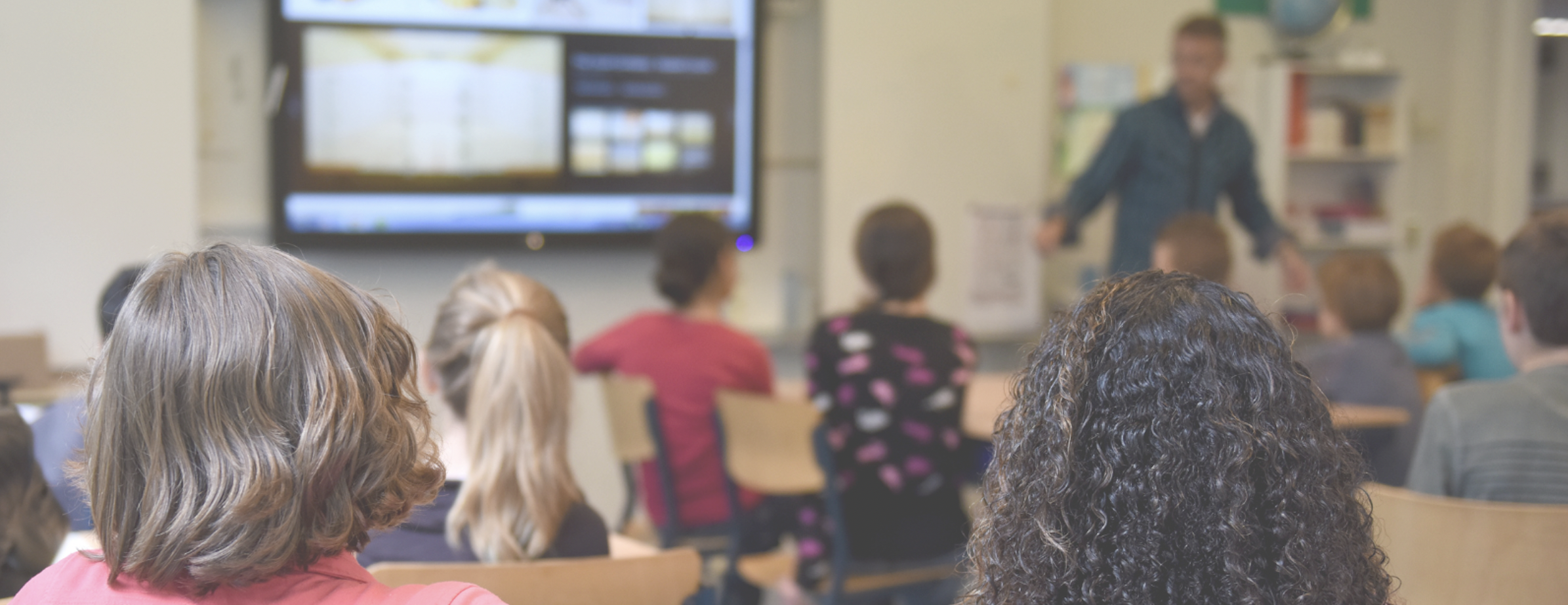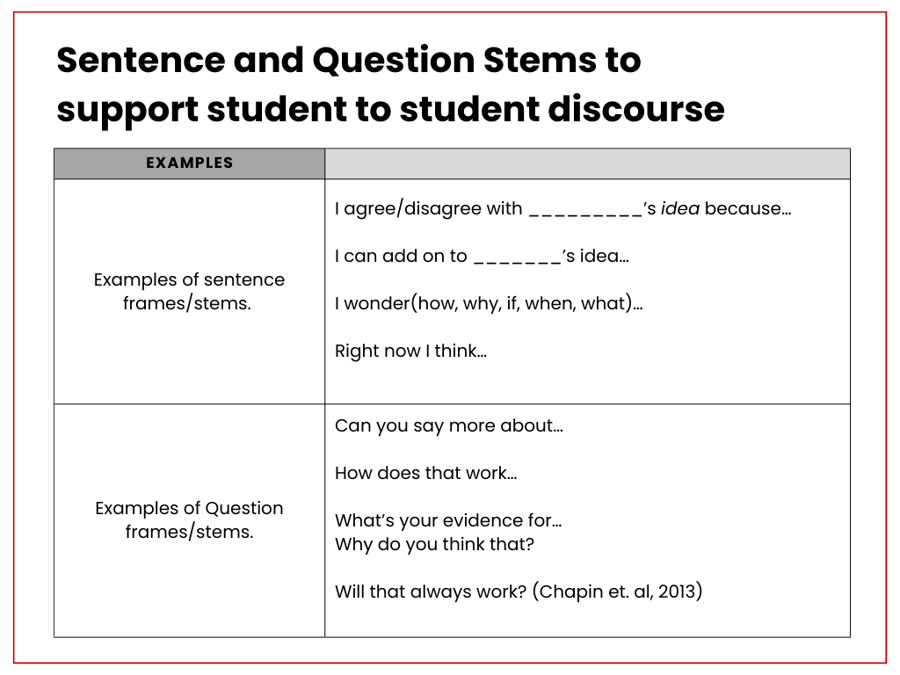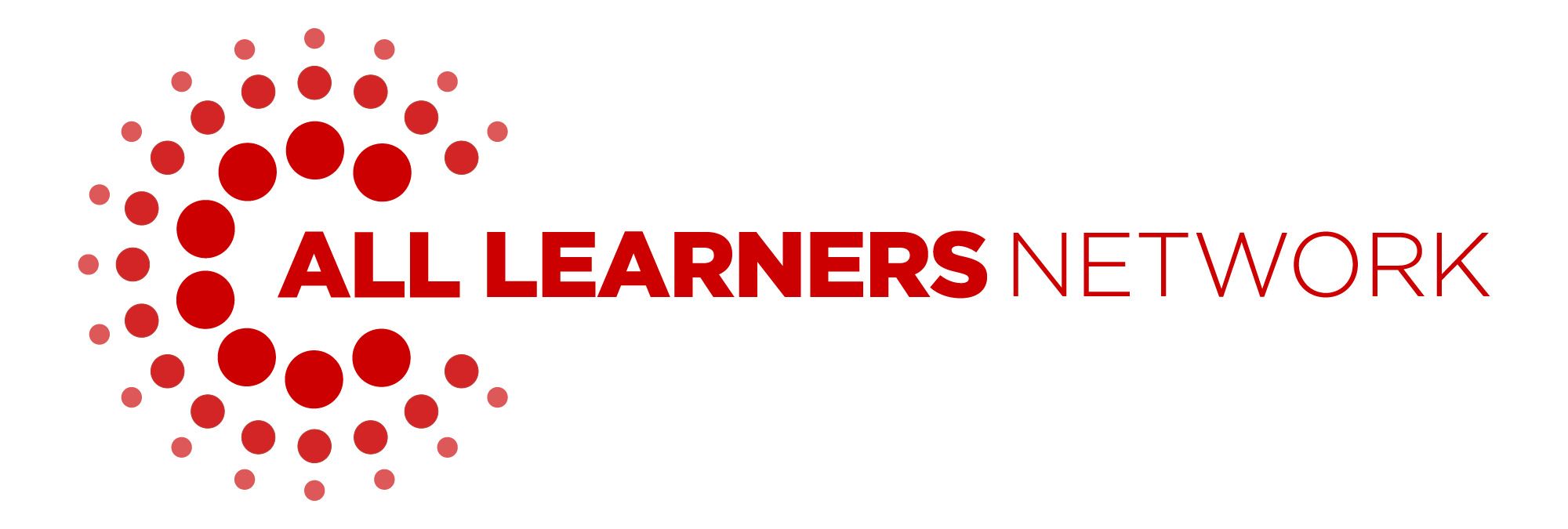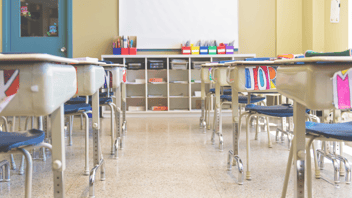
Discourse in the Mathematics Classroom
What is discourse and why does it matter?
Discourse is the communication of ideas where there is interaction between students' own thoughts and ideas and the consideration and examination of the ideas of others’ to make meaning and grow collective knowledge. With a significant shift in the role of the math educator from the holder and giver of knowledge to one who facilitates and presents meaningful and engaging tasks, math educators must develop skills and strategies that promote student discourse to position them as meaning makers.
The educator role in discourse can be considered in three parts: guiding the math, eliciting student thinking and supporting student to student exchanges (Staples and King, 2017). Math discourse can be facilitated through the combination of private think time (to gather and organize one’s ideas), turn and talk partnerships, small groups, and whole group conversations. These structures support the inclusion of all learners through a discourse rich culture. Further, math discourse promotes student agency and ownership and allows educators to make student models and strategies public documents for future use which reinforces the idea that peers are the most critical knowledge holders in the math classroom. When knowledge mobility passes between students and ideas are valued and made public, students can be more self-reliant and are able to engage in and be successful with productive struggle and problem solving (Liljedal, 2021).
An essential part of the math educator's job is to productively organize discourse. Educators must coordinate student ideas to position student discourse around making connections between mathematical ideas to expand the collective knowledge of the group. Starting with a clear objective followed by anticipating student mathematical ideas, monitoring student work, and selecting and sequencing student ideas to facilitate connections, educators are leveraging student models and strategies in public ways to shift the ownership of learning from the educator to the students (Smith & Stine, 2018). Through the use of effective mathematics teaching practices, including asking probing questions, choosing meaningful tasks that promote productive struggle and designing a collaborative and interactive learning culture and environment students are situated to own their learning, make comparisons using models, tools, structure and patterns to reason abstractly, persevere in problem solving and construct viable arguments and critique the reasoning of others (Common Core, 2021).
So where to start?
Facilitating productive discourse requires practice across a variety of settings. Often starting with low risk, highly engaging questions as part of a morning meeting allows students to practice with and make sense of sentence and question frames and stems in a productive authentic way. Once students internalize the expectations and routines for respectful conversations and have opportunities to practice in authentic settings then they are better prepared to be more vulnerable when faced with complex academic tasks.
From an equity and inclusion perspective, the educator's role, more specifically, is to build capacity and knowledge around how to have productive math discussions. The use of sentence frames and stems become a crucial component of equity and access in math discourse. Consider a student in the learning community that does not see themselves as a mathematician, yet. With this student in mind, how do educators help with access? How might using the examples below provide access points for students regardless of their academic knowledge? How can being part of the math conversation help to build confidence in their view of themselves as a productive mathematician? If students learn to ask questions and restate the ideas of others they can become more independent thinkers.
Teacher Talk Moves to support productive discourse
How can it be applied?
Within the All Learners Network (ALN) balanced math block, specifically an initial math lesson Launch, provides discourse opportunities through relaxed curiosity and open-ended tasks with many right answers or no right answers. This allows even the most vulnerable students greater access to engage in math discourse because their voices and contributions are valued. Imagine how that builds capacity and confidence to know the value is placed on the justification of your ideas! When students get to practice and build confidence through academic communication, collaboration and problem solving at the onset of math class they are more likely to be prepared to take on productive struggle alongside peers with more curricular or complex tasks. Further, within the main lesson and closure components of the ALN balanced math block, students once again are engaged in discourse facilitated by the teacher to publicly make connections to student ideas. Students work in dynamic and flexible collaborative groups to tackle problems through a variety of strategies and models in order to make meaning of focused concepts and mathematical ideas and practices.
Ultimately, educators should not say for students what they can say for themselves. The people doing the talking, work and struggle are the ones doing the learning. Educators must leverage student voice throughout the mathematics classroom in purposeful and productive ways to facilitate equitable learning for all students.
References
Chapin, S. H., O’Connor, C., & Anderson, N. (2013, June 22). Talk Moves: A Teacher’s Guide for Using Classroom Discussions in Math, Grades K-6 (Third). Math Solutions.
National Council of Teachers of Mathematics. (2022, September 25). Principles to Actions: Ensuring Mathematical Success for All (4th ed.).
Smith, M. S., & Stein, M. K. (2018, April 17). 5 Practices for Orchestrating Productive Mathematics Discussions (Second). Corwin.
Staples, M., & King, S. (2017). Eliciting, supporting and guiding the math: Three key functions of the teacher’s role in facilitating meaningful mathematical discourse. In D. A. Spangler & J. J. Wanko (Eds.), Enhancing Classroom Practice with Research behind Principles to Actions (pp. 25-36). Reston, VA: National Council of Teachers of Mathematics.
Click here for the printable version.




